#It's hot yoga good for arthritis
Explore tagged Tumblr posts
Text
"Healing from Within: Harnessing Bikram Yoga for Chronic Arthritis Relief"
Discover the therapeutic power of hot yoga in reducing stress and promoting relaxation, essential elements for managing osteoarthritis. The benefits of hot yoga for osteoarthritis extend beyond physical movements and encompass the holistic well-being of individuals. Stress has been known to exacerbate symptoms of osteoarthritis, making stress management a crucial component of overall condition management.
Read More - https://www.amazonhealthreview.com/3-reasons-why-bikram-yoga-is-great-for-chronic-arthritis/

#bikram yoga#benefits of bikram yoga for chronic arthritis#It's hot yoga good for arthritis#is hot yoga good for osteoarthritis
4 notes
·
View notes
Text


𝑰. ── ㅤBASICS.
BIRTH NAME. cheryl lee
KOREAN NAME. lee chaerin
NICKNAMES. cher, rin, bangtan’s barbie, cherry bomb, the bitter one, kkoch, colorful lee, chaeprincess
BIRTHDATE. april 20, 1996
ZODIAC. taurus & rat
BLOOD TYPE. a+
BIRTHPLACE. san francisco, california
HOMETOWN. san francisco, california
ETHNICITY. korean
NATIONALITY. korean-american
LANGUAGES. english, korean, japanese
FAMILY. hannah hyun-ae yang (mother), david dae-ho lee (father), charlotte lee (younger sister; deceased)
SEXUAL ORIENTATION. unknown
RELATIONSHIP STATUS. in a relationship
𝑰𝑰. ── PHYSICAL.
FACE CLAIM. joy of red velvet
HEIGHT. 5’6” / 168cm
BODY MODIFICATIONS.
double lobe piercing (both), orbital (right), helix (both), tragus (left)
cherry tattoo (back of left arm), ‘j’ (left wrist), ‘444’ (inner right arm), angel wings (nape), infinity (left pinkie finger), lotus flower (front of right shoulder), two koi fish (spine)
𝑰𝑰𝑰. ── CAREER.
STAGE NAME. cheri
COMPANY. big hit music (2010-2020), chromatic creative (current)
POSITIONS. main vocalist, lead dancer, sub rapper, face of the group
REPRESENTATIVE EMOJI. 🐶 / 🍒
𝑰𝑽. ── PERSONA.
MBTI. ENFP-A
people with the ENFP personality type (campaigners) are true free spirits – outgoing, openhearted, and open-minded. With their lively, upbeat approach to life, ENFPs stand out in any crowd. but even though they can be the life of the party, they don’t just care about having a good time. these personalities have profound depths that are fueled by their intense desire for meaningful, emotional connections with others.
ENNEAGRAM. type 3 – the achiever
STRENGTHS. good-natured, fun-loving, confident, charming, hard-working
WEAKNESSES. petty, hot-headed, overly sensitive, nosy, naive, competitive
𝑽. ── TRIVIA.
HABITS. sitting criss-cross in any seat, repeating words back, leaving sticky notes to keep track of objects, always wearing socks, crying out of anger or frustration, counting beats without music playing, mixing languages in conversation, chronically undersharing
LIKES. gossip, watercolor painting, pottery, the ocean, yoga, 90s-00s music, flower arrangements, perfume, songwriting, watching sports, christmas time
DISLIKES. messiness, insects, overly salted foods, strong liquor, invasion of privacy, hospitals, wearing glasses, mornings, being bored, cooking, being alone
PHOBIAS. astraphobia (fear thunder & lightning), nosocomephobia (fear of hospitals)
MEDICAL CONDITIONS. vasovagal syncope, chronic post-traumatic arthritis, ankylosing spondylitis, generalized anxiety disorder, anorexia nervosa
ALLERGIES. shellfish (mollusks, specifically), coconut, pineapple, latex, wool
𝑽𝑰. ── FACTS.
cheri was initially a member of a group called GPOP alongside gfriend’s sinb and eunha. after the failure of the company’s girl groups, cheri was handpicked by RM to be a member of BTS. everyone has always had doubts about having a girl in the group, and this has caused many issues for cheri personally and as an artist.
she was homeschooled until she moved to korea. she attended hanlim arts school in the applied music department and graduated in 2015. in 2016, she began online courses at USC and graduated in 2020 with a BA in music. she would like to work for a master’s degree.
her younger sister had epilepsy and passed away in her sleep after a seizure. charlotte’s death was incredibly difficult for cheri to get over and she considered giving up training and moving back to california. she was talked out of quitting, and decided her stage name would be ‘cheri’ because that was charlotte’s nickname for her.
cheri opened a youtube channel in late 2019 and was incredibly active in 2020 posting vlogs, covers, and unreleased songs. people started being weird online and she has posted rarely since then.
she did not renew her contract with big hit in 2018: she was on hiatus and was unsure if she’d go back to idol life after the year she’d had. she stuck with it until 2020, and after negotiating for months, she did not renew. she officially left big hit in january of 2021 and signed with CHROMATIC CREATIVE. although she remains a member of BTS, cheri has not been active with the group since 2020.
since her private instagram account was leaked, cheri has spoken about her privacy and has made it very clear that she’s not afraid to take legal action. she loves her fans, but at the end of the day she just wants to make music and wants to keep what little privacy she has private.
in 2019, big hit music and pledis entertainment confirmed cheri and seventeen’s joshua were in a relationship after speculation of cheri being in a relationship with exo’s baekhyun. in 2024, cheri seemingly confirmed her engagement to joshua on instagram.
#º ✧ 。― an angel’s kiss in spring ╱ ❛ cheri ❜#ficnetfairy#kpop oc#idol oc#bts 8th member#fictional kpop community#fictional soloist#fictional idol oc#fictional idol community#fictional kpop idol
38 notes
·
View notes
Note
i just got diagnosed with JRA. i'm 16. any advice?
Heya! I'm sorry you've gotta deal with that but good thing you got diagnosed!
I don't know what treatment your doctors will go with, mine started me out with a pill then added a shot on top of it since the pill alone wasn't enough. If you're squeamish of needles or shots you might wanna start bracing yourself for that if a pill isn't enough.
As for otherwise: start doing exercises early. It hurts, but it'll help. Gentle stuff is good, stretches that strengthen your muscles for example. A lot of yoga stretches are good and low impact. Swimming is another good activity, honestly need to do it more myself. I personally like rowing too.
For treating the pain: icy hot patches, lidocaine patches, Tylenol (arthritis edition) are good starts. If your pain gets too high, where you wanna like cry from it or can't move? Go to an urgent care or talk to your rheumatologist about pain medications that are stronger. They won't prescribe many, so use them wisely. Might wanna consider a pain specialist depending on how bad it is/gets.
Not sure if it's been brought up yet, but RA can cause problems in the lungs and eyes so it's a good move to see a pulmonologist and optometrist at some point. I see them twice a year (well, I'm supposed to, haven't seen the pulmonologist in a bit).
A note: RA (and autoimmune conditions) tend to come in packs, if there's one you have a high chance of having another. I'm diagnosed with two, a third that's debated if it's autoimmune or not, and suspected of a fourth. I know others with at least 3/4 autoimmune conditions as well. You'll wanna keep an eye out for things like random allergic reactions, pain that doesn't fit RA, and anything else that's off.
I hope your treatment is effective and things improve quickly!
2 notes
·
View notes
Text
🌟 Essential Tips and Techniques to Alleviate Joint Pain 🌿
Joint pain can significantly impact daily life, making even simple tasks challenging and uncomfortable. Whether caused by arthritis, injury, or other factors, managing joint pain is crucial for maintaining quality of life and mobility.
This article explores various strategies, from lifestyle adjustments to therapeutic techniques, aimed at alleviating joint pain effectively.

Understanding Joint Pain
Joint pain can arise from various conditions, including:
Osteoarthritis: Degenerative joint disease due to wear and tear.
Rheumatoid arthritis: An autoimmune disorder affecting joints.
Injury: Sprains, strains, or fractures impacting joint function.
Other conditions: Such as gout, lupus, or fibromyalgia.
Each condition may require specific management approaches, but many general strategies can help mitigate joint pain and improve joint health overall.
Lifestyle Modifications
1. Maintain a Healthy Weight:
Excess weight puts additional stress on joints, particularly weight-bearing ones like knees and hips.
Aim for a balanced diet rich in fruits, vegetables, lean proteins, and whole grains.
2. Regular Exercise:
Low-impact exercises like swimming, biking, or walking can strengthen muscles around joints and improve flexibility.
Avoid high-impact activities that may exacerbate joint pain.
3. Joint-Friendly Activities:
Yoga and tai chi improve flexibility and reduce stiffness.
Physical therapy can provide tailored exercises to strengthen specific joints.
4. Proper Posture and Body Mechanics 💪🏻:
Maintain good posture to reduce stress on joints, especially the spine and neck.
Lift heavy objects properly using your legs and avoiding twisting motions.
5. Ergonomic Adjustments:
Use ergonomic chairs and desks to support joints during work.
Adjust your environment to minimize repetitive movements that strain joints.
Dietary Considerations
1. Omega-3 Fatty Acids:
Found in fish like salmon and mackerel, these can help reduce inflammation.
Consider supplements if dietary intake is insufficient.
2. Antioxidants:
Vitamins C and E, found in fruits and vegetables, may protect joints from oxidative stress.
Berries, spinach, and nuts are rich sources.
3. Spices and Herbs 🌿:
Turmeric and ginger have anti-inflammatory properties.
Incorporate these into cooking or take as supplements.
4. Hydration:
Drink plenty of water to maintain joint lubrication and overall hydration.
Limit sugary drinks and alcohol, which can exacerbate inflammation.
Pain Management Strategies
1. Over-the-Counter Medications:
Nonsteroidal anti-inflammatory drugs (NSAIDs) like ibuprofen can reduce pain and inflammation.
Acetaminophen is an alternative for pain relief.
2. Topical Treatments:
Creams and gels containing capsaicin or menthol can provide localized pain relief.
Consider patches for convenience and prolonged relief.
3. Hot and Cold Therapy:
Heat packs or warm baths can relax muscles and improve circulation.
Cold packs or ice packs reduce inflammation and numb pain.
4. Acupuncture and Massage:
Acupuncture may help alleviate pain by stimulating specific points.
Massage therapy can reduce muscle tension and improve joint mobility.
Medical Interventions
1. Prescription Medications:
Disease-modifying antirheumatic drugs (DMARDs) for autoimmune conditions.
Corticosteroid injections for severe inflammation.
2. Joint Support Devices:
Braces, splints, or orthotics can provide stability and reduce joint strain.
Custom orthotics may correct alignment issues contributing to pain.
3. Surgical Options:
Joint replacement surgery by Dr. Siram helps alleviate joint pain by replacing damaged or deteriorated joints with prosthetic implants, restoring mobility and reducing discomfort significantly.
Arthroscopic surgery to repair or remove damaged tissue in the joint.
Psychological and Emotional Support
1. Coping Strategies:
Practice mindfulness or meditation to manage stress and pain perception.
Join support groups to connect with others facing similar challenges.
2. Cognitive Behavioral Therapy (CBT):
Helps develop coping skills and change negative thought patterns related to pain.
May complement medical treatments for better pain management.
Conclusion
Managing joint pain requires a multifaceted approach that combines lifestyle modifications, dietary adjustments, pain management strategies, and sometimes medical interventions.
By incorporating these tips and techniques into daily life, individuals can alleviate pain, improve joint function, and enhance overall quality of life.
Consult with healthcare professionals to develop a personalized plan that addresses specific needs and conditions, ensuring long-term joint health and well-being. 🩺💼
3 notes
·
View notes
Text






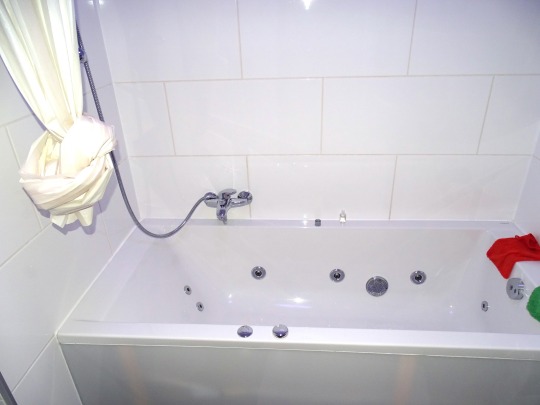


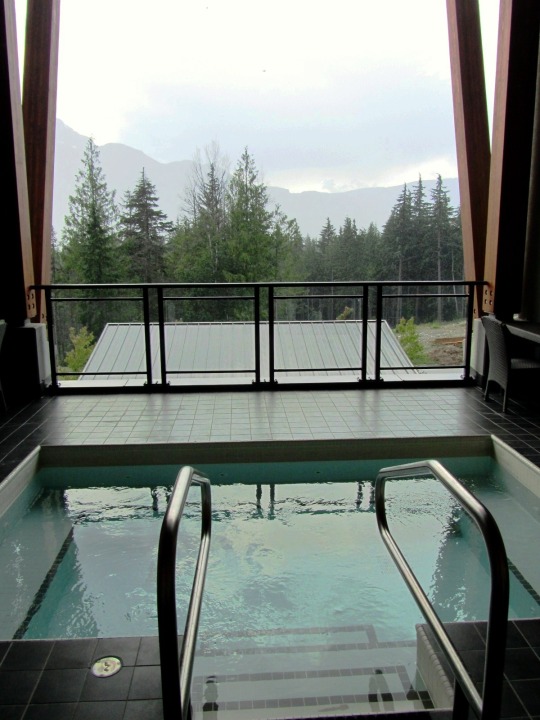



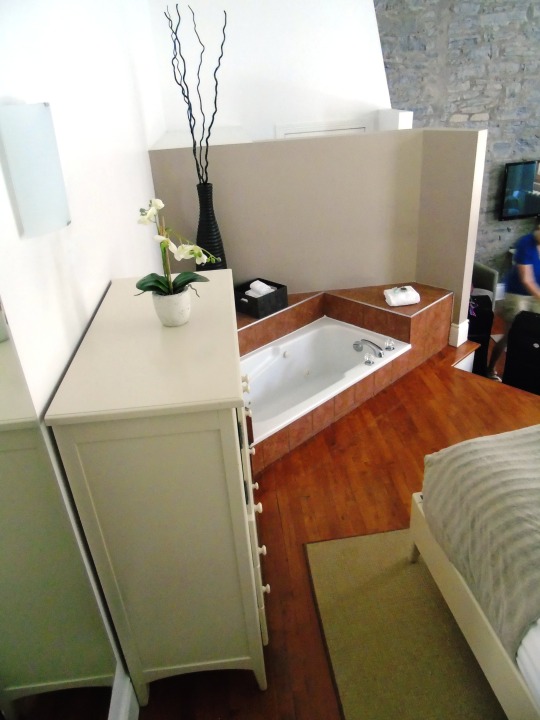




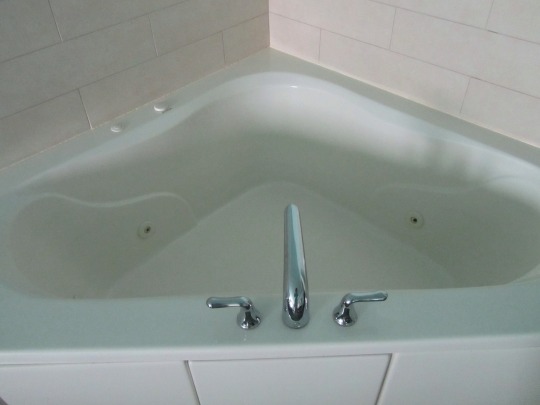




National Hot Tub Day
National Hot Tub Day is here, and you know what that means: you now have yet another excuse to enjoy relaxing in your hot tub.
But what if you want to do something more to celebrate? Here, we’ll show you five ways you can do just that:
Treat yourself to a new hot tub accessory.
Practice some hot tub yoga.
Indulge in aromatherapy.
Have a movie night.
Play some games with the whole family.
Ready to celebrate National Hot Tub Day the right way? Let’s dive in, first with why hot tubs are worth celebrating.
Why Hot Tubs Are Worth Celebrating
You probably know at least part of the answer to this question. After all, hot tubs have a reputation for being relaxing as well as therapeutic.
What you might not know is that hot tubs have a wealth of other benefits that make them worth celebrating:
Reduced stress: The warm water of a hot tub can help your body release feel-good stress-relieving endorphins.
Relaxation and pain relief: Whether you’re suffering from exercise-induced soreness, arthritis or another condition, hot tubs can help reduce pain, loosen muscles and take pressure off joints.
Better sleep: After taking a dip in your hot tub, you’ll likely be able to fall asleep faster and enjoy more restful sleep throughout the night.
5 Ways to Ring in National Hot Tub Day
1. Treat Yourself to a New Hot Tub Accessory
Hot tub accessories offer a fantastic way to spruce up your hot tub without breaking the bank.
For National Hot Tub Day, why not treat yourself to a hot tub accessory that can improve your overall experience in the long-run?
Here are our favorite types of hot tub accessories:
Cover lifters: No one wants to wrangle with a heavy cover when all they want to do is enjoy their hot tub. Make the process painless with a convenient cover lifter.
Steps: If you’re tired of slipping and sliding your way into your hot tub, a set of hot tub steps will be right up your alley. The right set of steps can not only make your entry and exit process much safer, but also serve as a perfect location to place your dry towel for easy access.
Pillows: If your hot tub sessions are getting dragged down by uncomfortable headrests or raggedy cushions, it’s high time you went for a new, deluxe pillow. By choosing the right size and shape for you, you can create a custom experience that’s tailored to your needs.
2. Practice Some Hot Tub Yoga
As a form of exercise that focuses on physical control as well as mental clarity and relaxation, yoga is a perfect match for your next hot tub session.
To get started, engage in some breathing exercises. Simply sit in your preferred seat and take a few deep breaths to begin. Then, focus on lengthening your spine, dropping your shoulders down and back, and noticing the sensation of the water on your skin.
If relaxation is all you’re looking for, you can simply continue that breathing exercise throughout the entirety of your session. Or, you can move onto some deeper stretches and muscle-strengthening poses. We recommend the seated spinal twist, cow face pose and boat pose.
For more info on each one, stay tuned for our Beginner’s Guide to Hot Tub Yoga.
3. Indulge in Aromatherapy
If you want to take your hot tub experience to the next level, you’d be wise to give aromatherapy a shot.
With hot tub aromatherapy, the scents of some of the world’s most prized and fragrant plants are infused in your hot tub water. You can achieve that either with the use of all-natural essential oils or pre-made bath crystals.
Traditionally, certain scents have certain benefits. For example:
Lavender relieves stress and may help you relax.
Eucalyptus
Thyme may reduce anxiety, fatigue and stress.
Keep an eye out for our upcoming post, The Secrets of Hot Tub Aromatherapy, for more information.
4. Have a Movie Night
Movie nights aren’t just for the couch. In honor of National Hot Tub Day, try watching your favorite flick in the hot tub instead.
There are a couple of easy ways you can do this:
Create a backyard movie theater with the help of a projector.
Set up a laptop or portable DVD/Blu-Ray player on a nearby table.
Plus, some of our highest-rated hot tubs, including the Dr. Wellness G-15 Tranquility Spa, come with built-in HDTVs to make your movie night even more fun.
5. Play Some Games With the Whole Family
If you’re not in the mood for a movie, trying playing some fun hot tub games for the whole family.
A few favorites include:
Waterproof cards and board games: If you have a set of waterproof cards or a waterproof board game lying around, you know what to do.
Rubber duck races: Push, blow and splash to see who’s duck can make it to the other side of the hot tub first.
Ping pong: Use plastic paddles to bounce a ping pong around. Whoever knocks the ball outside of the hot tub loses.
Hockey: Get your team’s “hockey puck” (a rubber duck or small floating ball will do just fine) to the other team’s side of the hot tub — no touching allowed.
How are you going to celebrate National Hot Tub Day?
No matter what you choose to do, you’re sure to have a fun and relaxing holiday with the help of your hot tub.
Source
#Allure of the Seas#cruise ship#Sutton Place Hotel#Revelstoke#Canada#Le Saint Pierre Auberge Distinctive#Quebec City#Québec#GTS Celebrity Constellation#National Hot Tub Day#NationalHotTubDay#28 March#original photography#travel#summer vacation#indoors#hotel room#AirBnB#Germany#architecture#vacation#USA
2 notes
·
View notes
Text
Top 10 Natural Remedies for Arthritis Treatment
Inadequate intake and habits Individuals develop diseases that affect their joints, which results in intolerable pain, swelling and rigidity in the infected areas. Various people around the world are suffering from arthritis, while some medications do exist that help with the symptoms of arthritis. Many still seek different solutions to get rid of the pain. Patients of Nimba Nature Cure who use these natural remedies report improved mobility, less pain, and better overall health.
Here are the top 10 natural remedies that can help you manage arthritis pain naturally.
1. Ayurvedic Therapies for Arthritis Relief
Panchakarma refers to cleansing Ayurvedic therapy, which is said to eliminate toxins from the body and, in turn, help improve joint pain. With Ayurveda, private cases of arthritis have been treated from as far back as the 1400s. Ayurvedic medicine also makes sure that the pain and swelling experienced in the joints can be reduced by smearing a particular herbal oil on the affected areas.
How to Use: Try an Ayurvedic massage with herbal oils daily to reduce stiffness.
2. Hot & Cold Therapy
The therapy helps reduce muscle aches and improves blood circulation. Cold treatment performs two functions: reducing swelling and minimising pain. The solution to arthritis pain relief exists in alternating between cold and hot compression treatments.
How to Use It: On the hurt joints, put a hot water bottle on them for 15 minutes and then an ice pack for 10 minutes.
3. Herbal Supplements for Arthritis
Several herbs are known for their anti-inflammatory properties and can treat arthritis naturally. One of the best herbs is Turmeric. It is said that It contains curcumin, which helps reduce inflammation. Drink turmeric milk daily or consume herbal supplements after consulting a naturopathy expert. Other than this, ginger also plays a very significant role in curing the disease as its ingredient acts as a natural pain reliever. Boswellia, also called Indian Frankincense, helps reduce the stiffness of the joint.
4. Yoga & Stretching Exercises
Yoga is one of the most essential exercises that an individual must practice in it’s daily life. It not only makes your body flexible but also enhances the positive and mental health of an individual. Practising yoga reduces stiffness and increases muscle strength. Regular mobility helps maintain the health of the joints as well as helps prevent the joints from becoming stiff. We recommend you practice various Yoyasnas such as Child’s Pose (Balasana), Warrior Pose and Cat-Cow Stretch. These exercises will not only reduce your joint pain but will also enhance the stretch of muscles and ligaments.
5. Hydrotherapy for Joint Pain Relief
Another method of treating arthritis naturally is hydrotherapy, or simply putting your body under water. Hydrotherapy enhances relaxation as warm water baths relieve stress on the joints, making movement easier.
How to Use: You can try taking a bath with Epsom salt. It is known to help relax the muscles and ease pain.

6. Anti-Inflammatory Diet
Are you aware that what you eat is very essential when it comes to controlling the symptoms of arthritis? Consuming certain foods can help suppress swelling, which will in turn, ease the discomfort associated with arthritis.
Best Foods For Arthritis:
Leafy greens, including spinach and kale
Foods rich in omega-3, like flaxseeds and walnuts
Nuts and whole grains are good for joints
Fresh fruits such as oranges, berries and papaya
At Nimba Nature Cure, we create tailored naturopathic diet plans so that you can naturally manage arthritis.
7. Acupuncture for Arthritis Relief
Acupuncture based on traditional Chinese medicine can heal the body’s energy and ease joint pain. Researchers have found proof that acupuncture makes the body’s natural pain-relieving chemicals work better.
How to Use: Consult a certified acupuncturist at Nimba for a customized arthritis treatment plan.
8. Essential Oils & Aromatherapy
Some essential oils are very good at reducing inflammation, which makes arthritis pain go away.
Best Essential Oils for Arthritis:Lavender Oil: This ingredient Soothes muscle pain Peppermint Oil: It provides a cooling effect. Eucalyptus Oil: It Reduces joint inflammation
How to Use: Mix a few drops of essential oil with coconut oil and gently massage affected joints.
9. Sunlight & Vitamin D
Vitamin D is essential for our skeletal system and joint health. Insufficient vitamin D leads to weaker bones and more joint discomfort.
How to use: Spend 15 to 20 minutes every day outdoors in the sun, or eat more mushrooms, milk products, and enriched cereals.
10. Meditation & Stress Management
Stress aggravates the pain in the body of an individual who suffers from arthritis. Practicing mindfulness techniques like meditation, simple deep breathing, and other relaxation techniques will enable one to manage stress better and can alleviate the symptoms.
How to Use It: Work towards implementing deep breathing and guided meditation for 10 minutes a day in order to ease discomfort.
At Nimba Nature Cure, we apply the principles of Ayurveda and Naturopathy, as well as manage hydrotherapeutic techniques, dieting, and other internal care treatments to nurture the entire person. We strive to enhance functioning, reduce pain, and improve the life of an arthritic without the use of medicines using our all-round approach.
Read More:- Top 10 Natural Remedies for Arthritis Treatment.
0 notes
Text
Effective Treatments For Back Pain
Back pain is something most people will experience at some point in their lives. Whether it’s a dull ache after sitting too long or a sharp pain when bending over, it can significantly affect daily life. If you're looking for effective back pain treatment in Vadodara or in other areas, understanding the causes and treatment options is the first step to finding relief.
What Causes Back Pain?
Back pain isn’t always the result of a serious injury. Often, it’s caused by simple things we do every day without realising their impact.
Poor Posture: Sitting or standing in the wrong way for long periods can strain the muscles and ligaments in the back, leading to discomfort or even chronic pain.
Muscle Strain: Overdoing it at the gym, lifting heavy objects, or sudden awkward movements can strain the muscles and lead to back pain.
Herniated Discs: Discs act as cushions between the bones in your spine. When a disc slips out of place or presses on a nerve, it can cause sharp pain.
Arthritis: Conditions like osteoarthritis can affect the lower back, causing stiffness and pain, especially in older adults.
Lifestyle Factors: Lack of exercise, being overweight, or high-stress levels can also contribute to persistent back pain.
Effective Treatments for Back Pain
Physiotherapy
Physiotherapy is one of the most effective ways to treat back pain. A physiotherapist can guide you through exercises that strengthen your back muscles, improve flexibility, and reduce pain. These sessions are tailored to your specific needs, making them highly effective.
Medications
Over-the-counter pain relievers like ibuprofen or paracetamol can help manage mild to moderate pain. In more severe cases, your doctor might prescribe muscle relaxants or anti-inflammatory drugs.
Hot and Cold Therapy
Applying heat or cold packs to the affected area can help reduce inflammation and soothe sore muscles. Cold packs are great for swelling, while heat can help with stiffness.
Chiropractic Care
For some people, chiropractic adjustments provide significant relief. These involve gentle manipulations of the spine to improve alignment and ease tension.
Lifestyle Changes
Incorporating regular exercise, maintaining a healthy weight, and practising good posture can prevent back pain from returning. Yoga and Pilates are excellent for improving core strength and flexibility, which support the spine.
Advanced Treatments
Advanced treatments like injections or minimally invasive surgery may sometimes be recommended. These are typically for conditions like herniated discs or severe arthritis.
When Should You Seek Professional Help?
Sometimes, back pain goes away on its own with rest and a little care. However, there are instances when you shouldn’t wait to seek professional help. If your pain is severe, lasts for more than a few weeks, or is accompanied by symptoms like numbness, tingling, or weakness in your legs, it’s important to consult a specialist.
Conclusion
Back pain can be challenging, but with the right care and attention, it’s manageable. If you're seeking back pain treatment in Vadodara and in other areas, there are plenty of effective options to help you find relief and improve your quality of life. Don’t let back pain hold you back—take the first step towards recovery today.
0 notes
Text
New Orleans Shoulder Arthritis Specialists Finding the Right Care
Shoulder arthritis is a debilitating condition that affects the lives of many people in New Orleans. It occurs when the cartilage in the shoulder joint wears down, causing pain, stiffness, and reduced mobility. This condition can significantly impact daily activities, from simple tasks like reaching for objects to more strenuous movements such as lifting or throwing. In New Orleans, individuals with shoulder arthritis often face challenges due to the city's unique climate and lifestyle. The humidity can sometimes exacerbate symptoms, making it crucial for patients to seek proper medical advice and treatment.
Living with Shoulder Arthritis in New Orleans Tips for Daily Management
Dealing with shoulder arthritis in New Orleans can be challenging, but there are several strategies that can make daily life more manageable. Engaging in low-impact exercises, such as swimming or yoga, can help maintain mobility while reducing pain. Additionally, using heat or ice packs, practicing good posture, and incorporating arthritis-friendly tools can aid in minimizing discomfort. For those experiencing persistent pain, seeking help from New Orleans shoulder arthritis specialists is essential to improve the quality of life.
Recognizing the Symptoms of New Orleans Shoulder Arthritis
Identifying the symptoms of shoulder arthritis early is crucial for effective management, especially in New Orleans. Common signs include persistent shoulder pain, stiffness, and a reduced range of motion. In New Orleans, the humidity can exacerbate these symptoms, making everyday activities such as dressing or cooking more challenging. Patients with shoulder arthritis in New Orleans often report increased discomfort during the city’s hot and humid summers. If you experience shoulder pain that persists or worsens with time, it’s important to consult a New Orleans-based specialist who can diagnose and develop a tailored treatment plan.
Best Treatment Options for New Orleans Shoulder Arthritis
In New Orleans, there are numerous treatment options available for managing shoulder arthritis. For mild cases, non-surgical approaches such as physical therapy, medications, and lifestyle modifications are commonly recommended. These treatments help reduce pain and improve function in patients with shoulder arthritis in New Orleans. More severe cases may require surgical interventions, including shoulder replacement surgery, which is performed by top orthopedic surgeons in the city. The key to successful treatment lies in early diagnosis and working closely with a healthcare provider in New Orleans to develop a personalized treatment plan that suits your needs.
How Climate Impacts Shoulder Arthritis in New Orleans?
The unique climate of New Orleans, characterized by high humidity and temperature fluctuations, can have a notable effect on shoulder arthritis. Many individuals with arthritis report that their symptoms worsen during humid or rainy conditions, which are prevalent in New Orleans. The moisture in the air can contribute to increased joint stiffness and discomfort. Understanding how the New Orleans climate affects shoulder arthritis is essential for managing flare-ups. Patients are encouraged to stay active, maintain a healthy weight, and use strategies such as heat or cold therapy to alleviate symptoms during extreme weather conditions.
Effective Exercises for New Orleans Shoulder Arthritis Relief
Staying active is crucial for managing shoulder arthritis, and there are specific exercises that can provide relief for New Orleans residents. Gentle stretching and strengthening exercises can help improve flexibility and reduce stiffness in the shoulder joint. New Orleans-based physical therapists often recommend low-impact activities such as swimming or yoga, which are gentle on the joints while promoting overall shoulder health. These exercises, when performed regularly, can greatly improve the quality of life for individuals with shoulder arthritis in New Orleans by reducing pain and improving mobility.
Top Specialists for Shoulder Arthritis in New Orleans
When it comes to treating shoulder arthritis, New Orleans is home to some of the top specialists in the field. These orthopedic experts are highly trained in diagnosing and managing shoulder arthritis, offering a range of treatments from conservative approaches to advanced surgical techniques. Finding the right specialist in New Orleans is essential for receiving the best care. Whether you need pain management, physical therapy, or surgical intervention, New Orleans specialists can provide comprehensive treatment plans tailored to your specific needs, ensuring the best possible outcome for shoulder arthritis patients.
Managing Daily Life with New Orleans Shoulder Arthritis
Living with shoulder arthritis in New Orleans can be challenging, but with the right strategies, it’s possible to maintain an active and fulfilling lifestyle. Adapting daily routines to minimize strain on the shoulder, using assistive devices when necessary, and following a treatment plan prescribed by a New Orleans healthcare provider can help manage pain and improve function. Engaging in low-impact activities and avoiding heavy lifting are some ways to reduce the stress on arthritic shoulders. New Orleans residents with shoulder arthritis can continue to enjoy the vibrant culture of the city by making small modifications to their daily routines.
Conclusion
Shoulder arthritis can be a challenging condition, but with the right treatment and care in New Orleans, it's possible to manage symptoms and maintain a high quality of life. Whether you're seeking non-surgical treatments or considering surgical options, New Orleans offers a range of specialists and resources to help you navigate your journey with shoulder arthritis. Staying informed, active, and working closely with healthcare professionals are key strategies for living well with shoulder arthritis in New Orleans.
0 notes
Text
Joint Pain and Arthritis: Managing Symptoms in the Monsoon
Tips for Managing Joint Pain and Arthritis in the Monsoon
Stay Active with Low-Impact Exercises: Regular exercise is crucial for managing arthritis, but it’s important to choose gentle activities. During the monsoon, opt for low-impact exercises like swimming, yoga, or Tai Chi. These activities maintain flexibility, strengthen muscles around the joints, and improve mobility without excessive strain.
Maintain a Healthy Diet: A balanced diet rich in antioxidant foods helps manage arthritis symptoms. Incorporate omega-3-rich foods such as salmon, flaxseed, and walnuts into your diet. Consume fresh fruits, vegetables, whole grains, and lean proteins for joint health. To minimize inflammation, avoid processed foods, excessive sugar, and trans fats.
Stay Hydrated: Proper hydration is vital for overall health and can help manage arthritis symptoms. Drinking enough water helps keep the joints lubricated and reduces friction, which can alleviate pain and stiffness. Aim to drink at least 8-10 glasses of water daily and include hydrating foods such as cucumbers, watermelon, and oranges in your diet.
Warm Up and Stretch: Before engaging in any physical activity, make sure to warm up and stretch your muscles and joints. Gentle stretching exercises enhance flexibility and alleviate stiffness. Focus on stretching major muscle groups and joints, particularly those that are prone to pain. Incorporating a warm-up routine into your daily activities can make a significant difference in managing arthritis symptoms.
Use Hot and Cold Therapy: Alternating between hot and cold therapy can be highly effective in reducing arthritis pain. Use a heating pad or warm towel to relax stiff joints and muscles. Cold packs or ice packs can help reduce inflammation and numb the pain. Apply heat or cold for 15-20 minutes, and repeat as needed throughout the day.
Wear Appropriate Footwear: Proper footwear is essential for reducing joint stress, especially during the monsoon when the ground is often wet and slippery. Choose shoes with good arch support and cushioning to absorb shock and provide stability. Avoid high heels and opt for comfortable, well-fitting shoes that support your feet and joints.
Create a Comfortable Living Environment: Maintaining a comfortable living environment can help manage arthritis symptoms. Ensure your home is well-ventilated and free from dampness and mild, which can worsen joint pain. Use dehumidifiers if necessary, and keep your living spaces warm and dry.
Consult Your Healthcare Provider: Regular check-ups with your healthcare provider are essential for managing arthritis. They can provide personalized advice, recommend suitable medications, and suggest specific exercises tailored to your condition. Do not hesitate to reach out to your doctor if you experience increased pain or discomfort during the monsoon season.
Contact Information
For more information or inquiries, please call +91 98254 45403/09 or email at [email protected]. Our team is ready to assist you with any questions and provide the support you need for your healthcare journey.
1 note
·
View note
Text
"Heat Up Your Practice: The Role of Hot Yoga in Managing Arthritis Symptoms"
When it comes to managing arthritis, hot yoga is a popular option that many people are interested in. "Hot yoga and arthritis" is a common topic of discussion. Hot yoga has been found to increase blood flow to the joints, reduce inflammation, and improve flexibility, which can be beneficial for those with arthritis.
#hot yoga#yoga#bikram yoga#is hot yoga good for osteoarthritis#bikram yoga for arthritis#hot yoga and arthritis
1 note
·
View note
Text
Today's date - 08 August 2024 Vedic and accurate Hindu Panchang

⛅Date - 08 August 2024 ⛅Day - Thursday ⛅Vikram Samvat - 2081 ⛅Ayan - Dakshinayan ⛅Season - Rain ⛅Month - Shravan ⛅Paksha - Shukla ⛅Tithi - Chaturthi till 12:36 pm August 09 then Panchami ⛅Nakshatra - Uttar Phalguni till 11:34 pm then Hasta ⛅Yoga - Shiva till 12:39 pm then Siddha ⛅Rahu Kaal - from 02:23 pm to 04:01 pm ⛅Sunrise - 06:13 ⛅Sunset - 07:17 ⛅Disha Shool - In the south direction ⛅Brahma Muhurta - from 04:46 to 05:30 in the morning ⛅Abhijit Muhurta - from 12:19 in the afternoon to 01:11 in the afternoon ⛅Nishita Muhurta - from 12:24 in the night of August 09 to 01:07 in the night of August 09 ⛅Vrat festival details - Vinayak Chaturthi ⛅Special - Eating radish on Chaturthi leads to loss of wealth. (Brahma Vaivart Purana, Brahma Khand: 27.29-34) 🔹Specially beneficial in rainy season🔹 🔹Ajwain is beneficial in stomach and other disorders 🔸Ajwain is hot, sharp, increases the gastric fire, is a good wind and cough reliever, is a digestive and increases bile. Ajwain is very beneficial in stomach disorders, joint pain, worm-infestation and phlegm-related disorders in rainy season.
🔹Medicinal use🔹
🔸 Mixing a little black salt in ajwain and taking it with lukewarm water half an hour before meals provides relief from poor digestion, indigestion, gas, stomach pain and hyperacidity.
🔸 Eating ajwain with the first bite of food provides relief from joint pain.
🔸 Eating equal parts of ajwain and sesame seeds 1-2 times a day provides relief from the problem of excessive and frequent urination.
🔸 Licking ajwain and one clove powder mixed with honey provides relief from vomiting.
🔸Taking carom seeds with lukewarm water after or in between meals for 15 to 30 days provides relief from pain during menstruation. (If you have excessive menstruation or excessive heat, do not use the above method. Drinking 2 to 4 glasses of water on an empty stomach in the morning is beneficial in irregular menstruation.)
🔹Quantity of carom seeds consumed in all the above experiments: half to 2 grams.
🔹Carom oil🔹
🔸Benefits: Massage with carom seeds oil is very beneficial in arthritis and rheumatism.
🔸Method of making oil: Heat 250 ml of sesame oil and take it down. Add 15 to 20 grams of carom seeds in it, cover it for some time and then filter it. Carom seeds oil is ready! Massage with it twice a day.
🔹Caution: In summer and autumn and people with bile nature should use carom seeds in very small quantities.
0 notes
Text
How to Treat Joint Pain without NSAIDs

Millions of individuals worldwide experience joint discomfort, which can be debilitating. While NSAIDs are routinely used to relieve joint pain, they have dangers such as stomach ulcers and cardiovascular disease. However, there are other ways to relieve joint discomfort without using NSAIDs.
Regular exercise is quite good at reducing joint discomfort. Swimming, cycling, and yoga are gentle activities that strengthen the muscles around the afflicted joint, reducing pressure and tension. Maintaining a healthy weight is also important, as excess weight puts strain on the joints.
Heat and cold therapy are natural treatments for joint pain. Heat therapy increases blood flow and relieves stiffness, whilst cold therapy decreases inflammation. A hot water bottle or heating pad can be used to apply heat, whilst ice packs or frozen vegetables wrapped in a towel can be used for cold treatment.
Understanding the reasons of joint pain is critical for effective treatment. Arthritis (including osteoarthritis and rheumatoid arthritis), gout, and fibromyalgia can all cause joint discomfort. Seeking medical attention for an accurate diagnosis and treatment is critical to avoiding further joint injury.
NSAIDs serve an important role in pain management by lowering inflammation. Common examples are ibuprofen, naproxen, and diclofenac. However, long-term use of oral NSAIDs can cause gastrointestinal difficulties, and prescription NSAIDs increase the risk of cardiovascular events.
0 notes
Text
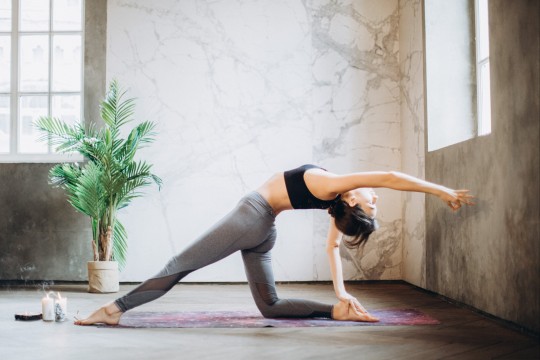
The Benefits of Yoga and Meditation for Women's Health and Beauty
Yoga and meditation are two ancient practices that have been gaining popularity in the modern world. They are not only good for your physical fitness, but also for your mental and emotional well-being. In this article, we will explore how yoga and meditation can benefit women's health and beauty in various ways.
Yoga and Meditation for Physical Health
Yoga and meditation can improve your physical health by enhancing your flexibility, strength, balance, and endurance. They can also help you prevent and manage various health conditions, such as:
- Cardiovascular diseases: Yoga and meditation can lower your blood pressure, cholesterol, and heart rate, which can reduce your risk of heart attack, stroke, and other cardiovascular problems.
- Diabetes: Yoga and meditation can improve your blood sugar control, insulin sensitivity, and lipid profile, which can prevent or delay the onset of type 2 diabetes.
- Arthritis: Yoga and meditation can reduce your pain, stiffness, and inflammation, and improve your joint function and mobility, which can ease the symptoms of arthritis.
- Osteoporosis: Yoga and meditation can increase your bone density and strength, and prevent bone loss and fractures, which can protect you from osteoporosis .
- Menopause: Yoga and meditation can alleviate your hot flashes, mood swings, insomnia, and anxiety, and improve your quality of life during menopause .
Yoga and Meditation for Mental Health
Yoga and meditation can improve your mental health by reducing your stress, anxiety, and depression, and enhancing your mood, self-esteem, and happiness. They can also help you cope with various mental challenges, such as:
- Trauma: Yoga and meditation can help you heal from trauma by reducing your fear, anger, and guilt, and increasing your resilience, compassion, and forgiveness .
- Addiction: Yoga and meditation can help you overcome addiction by reducing your cravings, withdrawal symptoms, and relapse risk, and increasing your self-control, mindfulness, and coping skills .
- Cognitive decline: Yoga and meditation can help you prevent or delay cognitive decline by improving your memory, attention, and executive function, and protecting your brain from aging and degeneration .
Yoga and Meditation for Beauty
Yoga and meditation can improve your beauty by enhancing your skin, hair, and nails, and giving you a radiant and youthful appearance. They can also help you achieve your beauty goals, such as:
- Weight loss: Yoga and meditation can help you lose weight by boosting your metabolism, burning calories, and reducing your appetite, and also by improving your body image, self-confidence, and motivation .
- Detoxification: Yoga and meditation can help you detoxify your body by stimulating your lymphatic system, liver, and kidneys, and eliminating toxins, waste products, and excess fluids from your body .
- Anti-aging: Yoga and meditation can help you slow down the aging process by increasing your blood circulation, oxygen delivery, and collagen production, and reducing your oxidative stress, inflammation, and cellular damage .
Conclusion
Yoga and meditation are two powerful ways to improve your health and beauty in various aspects. By practicing them regularly, you can enjoy a holistic and harmonious well-being. If you want to learn more about yoga and meditation, you can check out some of the resources that I have found for you. Thank you for reading my blog post. I hope you found it useful and interesting. Have a wonderful day! 😊
#yoga#meditation#women#health#beauty#fitness#wellness#stress#mood#skin#hair#nails#weight#detox#anti-aging
1 note
·
View note
Text
What is Naturopathy & How Does It Benefit You?
As the pace of the world accelerates, people start to realise that they need not only treatment for certain symptoms but comprehensive health. Such a practice is naturopathy that has been for some time in practice. But what is naturopathy exactly, and how does it help you? This of course leads to the question of what naturopathy treatment is, the principles of naturopathy and why it might just be the way forwards to achieving the healthier, better quality of life that you’ve been looking for.
What is Naturopathy?
Naturopathy is a system of healing that combines the natural and times-tested methods that are designed to help the body to heal itself. Whereas conventional medicine aims at masking the signs and symptoms of a disease, naturopathy tries to find out the cause of the disease. Nutrition, herbs, acupuncture, massage, exercise and stress management to assist the natural healing of the body.
Naturopathy is based on the principle that the human body needs a self healing mechanism if only it is given a chance through natural remedies. It is to do with prevention, self-care, and nature cure.
What is Naturopathy Treatment?
Naturopathy treatment style is an individualised and holistic process that includes but is not limited to physical, mental and spiritual level. A naturopathic doctor or practitioner always assesses your general lifestyle, dietary habits, emotional state, and medical history to help you develop a treatment program that suits you most. Common therapies in naturopathy treatment include:
Nutritional Therapy: Naturopathy is intense on diets and recommends a healthy diet for the body to function as it is required. Eating a sensible portion of foods which are good for the body should be the aim of most people. Diagnosis traditionally involves using specific dietary suggestions, supplementary feeding or detoxification to enhance the body’s healing process.
Herbal Medicine: Nowadays ecological means, such as herbs and other natural supplements, can help with a number of ailments. These are chiefly prescribed alongside other treatment techniques to treat sickness and ill-health.
Hydrotherapy: Bathing or immersion of the body part with cold, hot or steam water etc. in order to give relief from pain, swellings and congestion. Hydrotherapy can help to control chronic diseases like arthritis or digestive diseases and other complaints.
Physical Therapies: Some of the naturopathy treatment is therapeutic massage, acupuncture or chiropractic care for physical problems like stiffness, pain or poor blood circulation.
Lifestyle Modifications: Getting better sleep, less stress and better exercising practices are some of the beliefs that underpin the methods of a naturopath. Habits may include exercise, sports, wellness practices or strategies like yoga, deep breathing, or meditation.
Detoxification: Some of the Naturopathy treatments used include () fast or specific diets or even administration of herbs for cleansing of the body with a view of enhancing body functions.
How Does Naturopathy Benefit You?
Naturopathy has a number of advantages for the people who prefer effective and eco-friendly methods of engaging in their treatment. Here’s how it can help you:
1. Pays Attention to the Cause
Unlike allopathic treatments, which may deal with the symptoms of an illness with drugs or surgery, for instance, naturopathy seeks to get to the bottom of the problem. Naturopathy, based on an understanding of the causative factors including poor nutrient intake, stress or disturbance of life routines, is used top achieve sustainable health improvement.
2. Promotes Preventative Care
Another thing, which distinguishes naturopathy among the other systems of healing is that it is primarily a preventive system. Naturopathy employs health plans, modification of habits and natural treatments, to assist you in maintaining strong health and avoiding diseases before they develop.
3. Promotes Health- Related Quality of Life
Naturopathy impacts all the aspects of the human being: the physical, the mental, and the spiritual aspects; thus the gains are much greater than physical well being. Closely related to the physical changes in a patients’ health, patients who receive naturopathy also testify to enhancements in their stress levels, moods and enjoying their lives more than before.
4. Natural Healing Without Side Effects
An added advantage of naturopathy is that most of the treatments are natural and have little or no side effects that one would experience using prescribed drugs. This makes naturopathy a safe and effective option for those seeking a gentler form of healing.
5. Tailored to Individual Needs
It is important for anyone to remember that no two people are alike, and naturopathy honours this with individual care. Naturopathic practitioners can help with chronic pain, digestion, hormonal imbalance, depression, anxiety and stress, for every patient a specific cleansing plan will be created.

6. Supports Long-Term Health
Since naturopathy involves recommending long term change of lifestyle as a remedy to diseases, then it is a form of sustainable health. Unlike many products that provide a single solution, it fosters the enhancement of healthier habits and taking the right choices regarding sustainability of health.
Is Naturopathy Right for You?
If you are in search of the genuine ways of treatment that care both for the physical and the overall well-being of a person, then naturopathy can be the way that will suit you most of all. Whether you have some long-standing health issues or simply want to avoid getting sick, naturopathy treatment can give you a good non-aggressive therapy for keeping your health in check.
Nimba Nature Cure is the best place as we have naturopathic practitioners to support the healing power inherent in everyone through natural methods. At our centre, you will find all types of naturopathic therapies, which will help make adjustments considering your personal traits, and overall health of your body and spirit.
Today, Naturopathy is not only a fashion of a natural way of living, but it is a theory and work based on the concept of optimal functioning of the body if supplied with the necessary means. If you are dealing with any sickness or disease or are just interested in enhancing your health, naturopathy will be of great assistance to you by giving a tailored approach towards health.
If you are now considering the advantages of using Naturopathy or Naturopathic treatment, it is time for you to join Nimba and start a brand new proactive, healthier life.
Read More:- What is Naturopathy & How Does It Benefit You?
0 notes
Text
Massage Therapy: Relieving Stress and Restoring Balance
Shiatsu: A Japanese form of massage, shiatsu involves applying pressure to specific points along the body's energy pathways, known as meridians. Massage Therapy Shiatsu practitioners use their fingers, thumbs, and palms to release tension, balance energy, and promote overall well-being.Thai Massage: Thai massage is a traditional form of bodywork that combines yoga-like stretching, acupressure, and energy work. The recipient remains fully clothed during a Thai massage, which is often performed on a mat on the floor. It is excellent for improving flexibility, relieving tension, and promoting relaxation.Hot Stone Massage: Hot stone massage involves the use of heated stones, typically basalt stones, to warm and relax the muscles. The therapist may use the stones in combination with their hands to provide a deeply soothing and therapeutic experience.
Sports Massage Sports massage is specifically tailored to athletes and individuals engaged in physical activity. It helps prevent and treat injuries, as well as improve flexibility and performance. Sports massage may include techniques like deep tissue massage and stretching.These are just a few examples of the many massage modalities available. Each modality has its unique approach and benefits, making it essential for clients to choose the one that best suits their specific needs and preferences Benefits of Massage Therapy The benefits of massage therapy are numerous and extend to both the physical and mental realms. Here are some of the most notable advantages:
Stress Reduction: One of the primary benefits of massage therapy is its ability to reduce stress and induce relaxation. Through the release of endorphins, the body's natural feel-good chemicals, massage helps lower stress hormones and promotes a sense of well-being.
Pain Management: Massage therapy is effective in managing various types of pain, including chronic pain conditions such as arthritis, fibromyalgia, and lower back pain. It works by increasing blood flow to the affected areas and releasing muscle tension.Improved Circulation: The manipulation of muscles during a massage encourages blood flow, which, in turn, improves circulation. Better circulation can contribute to the delivery of oxygen and nutrients to the body's cells and the removal of waste products.Enhanced Flexibility and Range of Motion: Massage therapy can help improve joint flexibility and range of motion, making it especially beneficial for individuals with musculoskeletal conditions or those looking to enhance their athletic performance.
Better Sleep: Many people report improved sleep quality after a massage session. It can help those with insomnia or other sleep disorders achieve more restful sleep. Emotional Well-Being: Massage therapy has positive effects on mental health, including reducing symptoms of anxiety and depression. The sense of relaxation and well-being it imparts can enhance mood and emotional balance.Enhanced Immunity: Research suggests that regular massage can boost the immune system by increasing the production of natural killer cells, which help the body defend against illnesses and infections.Pregnancy Support: Prenatal massage is specifically tailored to the needs of expectant mothers. It can alleviate common pregnancy discomforts, such as lower back pain and swollen ankles, and provide emotional support during this transformative period.

1 note
·
View note
Text
Best Orthopedic Consultancy In India: How To Maintain Bone and Joint Health In Winters?
In the winter, stiffness is a regular occurrence. You may find yourself less flexible in the winter, regardless of whether you have arthritis or not. There might be several causes for this, including inactivity.
The winter months cause us to move our bodies much less because of the cold. Furthermore, the cold temperature exacerbates any pre-existing joint stiffness and discomfort. Not dressed for the weather might possibly be the cause of your increased stiffness. As the best orthopedic consultancy in India provides some simple strategies to combat this problem, keep reading.
Why does cold cause bone and joint problems?
A hypothesis states that the expansion of muscle, tendon, and surrounding tissues is caused by a decrease in barometric pressure, albeit there is no one reason for this. Pain in the joints and bones is caused by the limited amount of space in the body.
Follow these diet tips to reduce stiffness in winter:
The foundation of a healthy lifestyle is a balanced diet. Consume a diet rich in fruits, vegetables, grains, dairy, and legumes.
Consume a diet high in vitamin C, D, and K.
Milk, cheese, egg yolks, and fatty seafood are good sources of vitamin D.
Green leafy vegetables, such as broccoli, spinach, cabbage, and kale, are good sources of vitamin K.
Strawberries, kiwis, oranges, and lemons are good sources of vitamin C.
Boost the amount of omega-3 fatty acids in your diet by include more avocado, flaxseeds, walnuts, and seafood.
1. Stay warm
Staying warm is essential for preserving a robust musculoskeletal system during the winter, and our clothing choices may make a big difference in this regard. To retain warm air close to your body, wear many thin, warm layers rather than one heavy one. Wearing or removing clothing in this manner allows you to more easily regulate your body temperature when moving from the outside to the inside.
2. Get enough vitamin D
According to the best orthopedic consultancy in India, the sun, as you may know, is a fantastic source of vitamin D. One of the greatest methods to acquire more vitamin D is to sunbathe, particularly if you’re a vegetarian. It might be challenging to get enough vitamin D without meat. Prolonged sun exposure, meanwhile, can also be detrimental. Don’t spend hours in the sun; instead, limit your daily exposure to 10 to 20 minutes.
3. Keep moving
It doesn’t matter whether you have arthritis; your joints are designed to move. Exercise according to the best orthopedic consultancy in India may seem like the last thing you need for your suffering joints, but it really helps the critical nutrients enter the area to help combat inflammation and stiffness. In addition, a regular exercise regimen helps build stronger surrounding muscle groups in your joints, reducing stress on those locations.
4. Stretch daily
Making stretching a regular part of your routine is another great approach to keep your joints comfortable. If the tissues around your joints remain flexible, you can keep your range of motion even if you have arthritis. A great approach to include stretching into your day is to enroll in an online yoga class.
5. Eat well
In addition to improving overall health and joint health, a balanced diet helps people avoid gaining weight. To reduce the inflammation that causes discomfort around the joints, eat foods high in omega-3 fatty acids, such almonds and salmon. Vitamin K, which is found in dark leafy greens like spinach and kale, helps to build stronger bones. Eating foods high in vitamin C, such as tomatoes, oranges, and red peppers, can help lessen joint pain and cartilage loss.
6. Get enough heat
You can soothe your aching joints by applying more heat with the help of a heating pad or a hot water bag. Try taking a hot bath or soaking your knees in hot water to ease joint discomfort and relax your muscles. Steam treatment is an additional choice. It is advised to stay away from utilizing hot water bottles and electrically heated pads for lengthy periods of time if you have diabetes or other health problems.
7. Maintain a healthy weight
Holiday festivities and a wintertime lack of exercise may contribute to unwanted weight gain. Your knees and other joints may be compressed by even a small amount of excess weight, making your aches and pains worse. Make an effort to follow a well-thought-out weight-management strategy to avoid gaining extra weight and lessen the chance that joint soreness may get worse.
8. Drink enough water
Drinking enough water according to the best orthopedic consultancy in India can help you manage your immunity, prevent illness, and alleviate muscular spasms. Drinking water on a regular basis might increase your energy. Furthermore, even a small amount of dehydration may raise your threshold for pain, so make sure you consume enough water each day. Make sure you get in eight or ten glasses of water a day.
9. Get proper sleep
For your body to repair and regenerate, it needs enough sleep each night. To reduce inflammation in your joints, we recommend that you receive eight hours of restful sleep per night. Aim for uninterrupted sleep by taking the appropriate steps to guarantee higher-quality rest.
10. Maintain right posture
Both when standing and sitting, maintain a straight back.
It is usually a good idea to wear a backpack across both shoulders in order to reduce strain on one.
When carrying large goods, bend your knees rather than your back.
In the end, protecting your joints
When engaging in high-intensity exercises, make sure to wear knee, wrist, and elbow protectors to avoid damage. Take the aforementioned arthritis preventive measures and enjoy the winter. Please visit specialists for Bone and Joint at RehabMitra if you are experiencing severe discomfort in your joints as a result of arthritis. If you feel any discomfort or stiffness throughout the winter, remember these guidelines.
0 notes